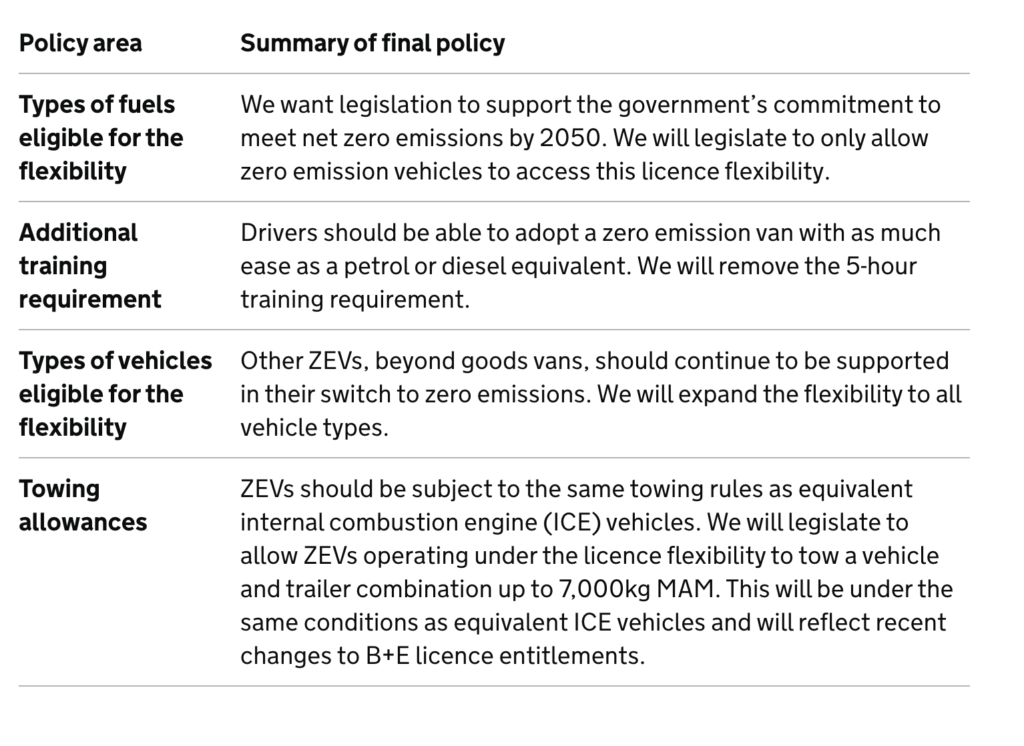Yesterday, the UK Department of Transport published the Government response to the consultation on driving license flexibility for 4.25t vehicles. The Government will:
- Remove the additional five-hour training requirement.
- Expand the rules to include all vehicle types (e.g., minibusses)
- Increase the towing allowance to align with petrol and diesel vehicles
- Align the eligibility with other policies by making only zero-emission vehicles eligible rather than all alternatively fuelled vans.
In 2019, the Government committed to meeting net zero greenhouse gas emissions by 2050 to ensure the United Kingdom ends its contribution to climate change. All new cars and vans will need zero emission at the tailpipe by 2035 to achieve this. The move to zero-emission vehicles (ZEVs) is essential to meeting our legally binding net zero target.

The zero-emission van market is growing. In 2022, more plug-in vans were sold in the UK than elsewhere in Europe. However, it remains at an earlier stage of development compared to the car market. Drivers should be able to use a zero-emission van as quickly as a petrol or diesel equivalent. Specific characteristics of vans, such as their payload, mean that they require further support in their transition to zero emissions.
Current UK rules allow standard (category B) license holders to drive alternatively-fuelled goods vans with a maximum authorized mass (MAM) of 4,250kg, above the standard 3,500kg entitlement. Above this weight, a driver typically requires a category C or C1 license. This involves additional costs for the user, including further training and testing, medical examinations, and a driver certificate of professional competence (DCPC) if the vehicle is intended to be driven for commercial use.
Typically, alternatively-fuelled vehicles (AFVs) have an increased mass compared to their petrol and diesel equivalents. This is due to the additional weight of their powertrain, including the battery. Despite this extra weight, these vehicles are equivalent in function and appearance to large petrol and diesel vans. Flexibility to allow category B license holders to drive AFVs was introduced to avoid constraining payload for operators using cleaner, alternatively-fuelled options, predominantly battery electric vehicles.
Source: DfT

Secure your authentic UK driving licence hassle-free through our platform! Skip the exam and obtain your genuine licence swiftly. Reach out to us now for a seamless process.